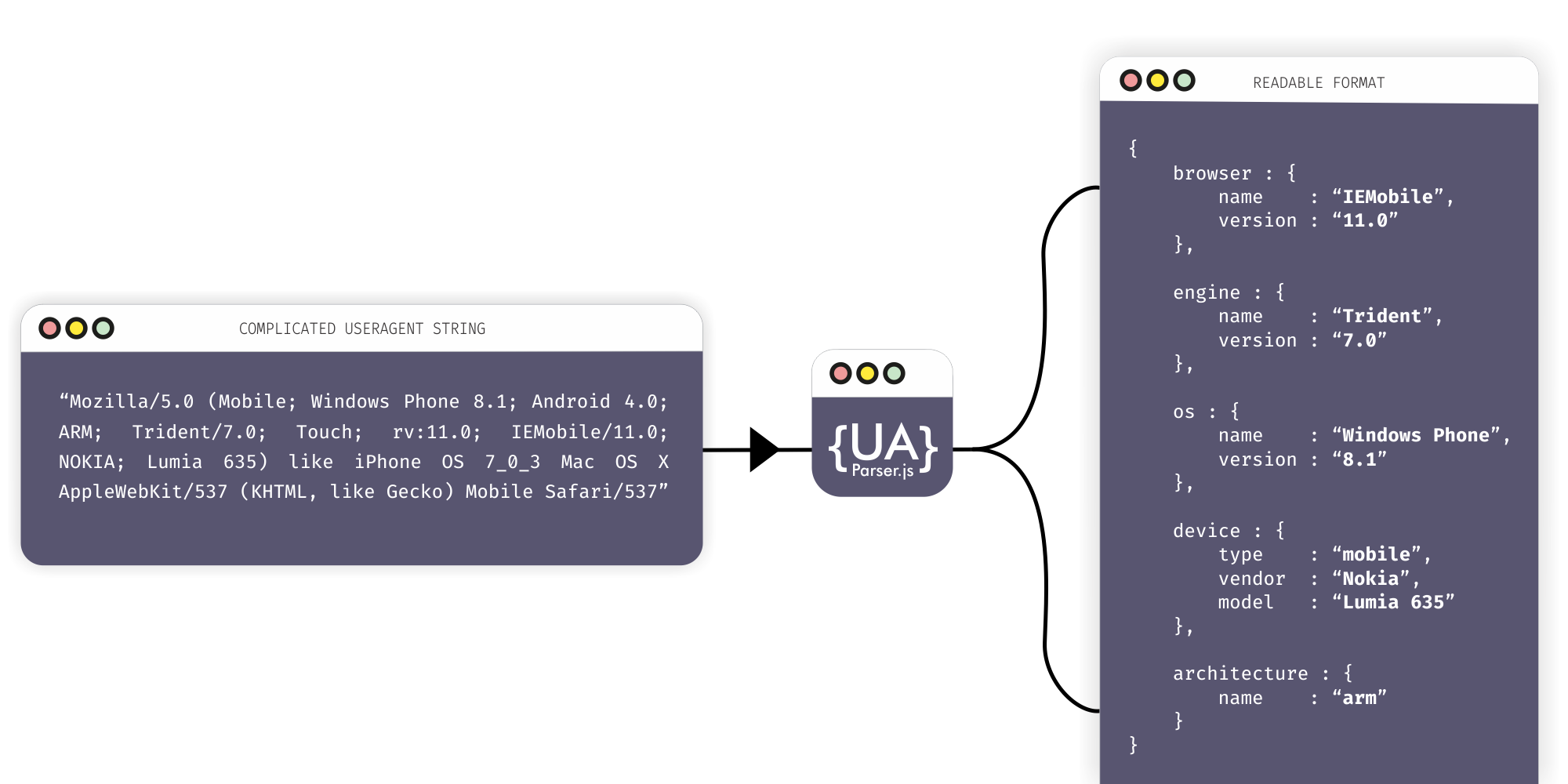Why UAParser.js?
UAParser.js simplifies user-agent detection by providing a structured approach. It's a clean and reliable alternative to the messy reality of real-world user-agent strings.
Real-World User-Agents Are Full of Surprises
Parsing user-agents looks simple... until you actually try it. Every different browsers, devices, and apps each have their own quirks, and they really love to surprise you.
Let's run through a quick example. Suppose we receive this user-agent from a visitor:
const ua = `Mozilla/5.0 (Linux; Android 10; STK-LX1
Build/HONORSTK-LX1; wv) AppleWebKit/537.36 (KHTML,
like Gecko) Version/4.0 Chrome/110.0.5481.153 Mobile
Safari/537.36 musical_ly_2022803040 JsSdk/1.0
NetType/WIFI Channel/huaweiadsglobal_int
AppName/musical_ly app_version/28.3.4 ByteLocale/en
ByteFullLocale/en Region/IQ Spark/1.2.7-alpha.8
AppVersion/28.3.4 PIA/1.5.11 BytedanceWebview/d8a21c6`;Yep, this is a real user-agent (what???), and it shows up more often than you'd think. But hey, no worries, let's just use UAParser.js:
// Just pass that complex user-agent string to UAParser
const parser = new UAParser(ua);
// And voila!
console.log(parser.getBrowser());
/*
{
name : "TikTok",
version : "28.3.4",
major : "28",
type: "inapp"
}
*/
console.log(parser.getEngine());
/*
{
name : "Blink",
version : "110.0.5481.153"
}
*/
console.log(parser.getDevice());
/*
{
type : "mobile",
vendor : "Honor",
model : "STK-LX1"
}
*/
console.log(parser.getOS());
/*
{
name : "Android",
version : "10"
}
*/So, in summary, our visitor is browsing from a TikTok app on an Honor device running Android.
Phew! Thanks, UAParser.js!
UAParser.js Turns Chaos Into Schema
Say no more to complicated user-agent strings. UAParser.js automagically turns them into well-structured data:


